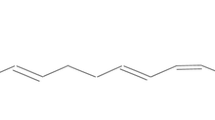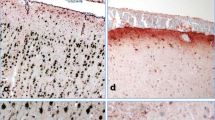Abstract
Sodium fluoroacetate was introduced as a rodenticide in the US in 1946. However, its considerable efficacy against target species is offset by comparable toxicity to other mammals and, to a lesser extent, birds and its use as a general rodenticide was therefore severely curtailed by 1990. Currently, sodium fluoroacetate is licensed in the US for use against coyotes, which prey on sheep and goats, and in Australia and New Zealand to kill unwanted introduced species.
The extreme toxicity of fluoroacetate to mammals and insects stems from its similarity to acetate, which has a pivotal role in cellular metabolism. Fluoroacetate combines with coenzyme A (CoA-SH) to form fluoroacetyl CoA, which can substitute for acetyl CoA in the tricarboxylic acid cycle and reacts with citrate synthase to produce fluorocitrate, a metabolite of which then binds very tightly to aconitase, thereby halting the cycle. Many of the features of fluoroacetate poisoning are, therefore, largely direct and indirect consequences of impaired oxidative metabolism. Energy production is reduced and intermediates of the tricarboxylic acid cycle subsequent to citrate are depleted. Among these is oxoglutarate, a precursor of glutamate, which is not only an excitatory neurotransmitter in the CNS but is also required for efficient removal of ammonia via the urea cycle. Increased ammonia concentrations may contribute to the incidence of seizures. Glutamate is also required for glutamine synthesis and glutamine depletion has been observed in the brain of fluoroacetate-poisoned rodents. Reduced cellular oxidative metabolism contributes to a lactic acidosis. Inability to oxidise fatty acids via the tricarboxylic acid cycle leads to ketone body accumulation and worsening acidosis. Adenosine triphosphate (ATP) depletion results in inhibition of high energy-consuming reactions such as gluconeogenesis. Fluoroacetate poisoning is associated with citrate accumulation in several tissues, including the brain. Fluoride liberated from fluoroacetate, citrate and fluorocitrate are calcium chelators and there are both animal and clinical data to support hypocalcaemia as a mechanism of fluoroacetate toxicity. However, the available evidence suggests the fluoride component does not contribute.
Acute poisoning with sodium fluoroacetate is uncommon. Ingestion is the major route by which poisoning occurs. Nausea, vomiting and abdominal pain are common within 1 hour of ingestion. Sweating, apprehension, confusion and agitation follow. Both supraventricular and ventricular arrhythmias have been reported and nonspecific ST- and T-wave changes are common, the QTc may be prolonged and hypotension may develop. Seizures are the main neurological feature. Coma may persist for several days. Although several possible antidotes have been investigated, they are of unproven value in humans. The immediate, and probably only, management of fluoroacetate poisoning is therefore supportive, including the correction of hypocalcaemia.


Similar content being viewed by others
References
Kalmbach ER. ‘Ten-eighty’: a war-produced rodenticide. Science 1945; 102: 232–3
Marais JSC. Monofluoroacetic acid, the toxic principle of ‘Gifblaar’, Dichapetalum cymosum (Hook) Engl. Onderstepoort J Vet Sci Animal Ind 1944; 20: 67–73
Harper DB, O’Hagan D. The fluorinated natural products. Nat Prod Rep 1994; 11: 123–33
Eason C. Sodium monofluoroacetate (1080) risk assessment and risk communication. Toxicology 2002; 181–182: 523–30
Beasley M, editor. Guidelines for the safe use of sodium fluoroacetate (1080). Wellington (New Zealand): Occupational Safety and Health Service, Department of Labour, 2002
Brockmann JL, McDowell AV, Leeds WG. Fatal poisoning with sodium fluoroacetate: report of a case. JAMA 1955; 159: 1529–32
Harrisson JWE, Ambrus JL, Ambrus CM, et al. Acute poisoning with sodium fluoroacetate (compound 1080). JAMA 1952; 149: 1520–2
Gajdusek DC, Luther G. Fluoroacetate poisoning: a review and report of a case. Am J Dis Child 1950; 79: 310–20
Reigart JR, Brueggeman JL, Keil JE. Sodium fluoroacetate poisoning. Am J Dis Child 1975; 129: 1224–6
Parkin PJ, McGiven AR, Bailey RR. Chronic sodium monofluoroacetate (compound 1080) intoxication in a rabbiter. N Z Med J 1977; 85: 93–6
Pridmore SA. Fluoroacetate poisoning: nine years later. Med J Aust 1978; 9: 269–70
Trabes J, Rason N, Avrahami E. Computed tomography demonstration of brain damage due to acute sodium monofluoroacetate poisoning. J Toxicol Clin Toxicol 1983; 20: 85–92
McTaggart DR. Poisoning due to sodium fluoroacetate (‘1080’). Med J Aust 1970; 2: 641–2
Ramirez M. Inebriation with pyridoxine and fluoroacetate: a case report. Vet Hum Toxicol 1986; 28: 154
Robinson R, Griffith J, Nahata M, et al. Ingestion of ratbane 1080 sodium monofluoracetate. J Toxicol Clin Toxicol 2001; 39: 477–8
Robinson RF, Griffith JR, Wolowich WR, et al. Intoxication with sodium monofluoroacetate (compound 1080). Vet Hum Toxicol 2002; 44: 93–5
Krieger RI, editor. Handbook of pesticide toxicology: agents. 2nd ed. San Diego (CA): Academic Press, 2001
Chung HM. Acute renal failure caused by acute monofluoroacetate poisoning. Vet Hum Toxicol 1984; 26: 29–32
Chi C-H, Chen K-W, Chan S-H, et al, editor. Clinical presentation and prognostic factors in sodium monofluoroacetate intoxication. J Toxicol Clin Toxicol 1996; 34: 707–12
LaGoy PK, Bohrer RL, Halvorsen FH. The development of cleanup criteria for an acutely toxic pesticide at a contaminated industrial facility. Am Ind Hyg Assoc J 1992; 53: 298–302
Höjer J, Hung HT, Du NT, et al. An outbreak of severe rodenticide poisoning in North Vietnam caused by illegal fluoroacetate [abstract]. J Toxicol Clin Toxicol 2003; 41: 646
Peters RA. Lethal synthesis and carbon-fluorine compounds. In: Biochemical lesions and lethal synthesis. Oxford: Pergamon Press, 1963: 88–130
Peters RA. Lethal synthesis. Proc R Soc (Lond) B Biol Sci 1952; 139: 143–70
Peters RA, Shorthouse M. Note upon the behaviour of rat brain tissue treated with fluoroacetate in vitro. Biochem Pharmacol 1966; 15: 2130–1
Liébecq L, Peters RA. The toxicity of fluoroacetate and the tricarboxylic acid cycle. Biochim Biophys Acta 1949; 3: 215–30
Carrell HL, Glusker JP, Villafranca JJ, et al. Fluorocitrate inhibition of aconitase: relative configuration of inhibitory isomer by x-ray crystallography. Science 1970; 170: 1412–4
Clarke DD. Fluoroacetate and fluorocitrate: mechanism of action. Neurochem Res 1991; 16: 1055–8
Lauble H, Kennedy MC, Emptage MH, et al. The reaction of fluorocitrate with aconitase and the crystal structure of the enzyme-inhibitor complex. Proc Natl Acad Sci U S A 1996; 93: 13699–703
Stewart GG, Abbs ET, Roberts DJ. Biochemical effects of fluoroacetate administration in rat brain, heart and blood. Biochem Pharmacol 1970; 19: 1861–6
Goncharov NV, Jenkins RO, Radilov AS. Toxicology of fluoroacetate: a review, with possible directions for therapy research. J Appl Toxicol 2006; 26: 148–61
Lahiri S, Quastel JH. Fluoroacetate and the metabolism of ammonia in brain. Biochem J 1963; 89: 157–63
Engel FL, Hewson K, Cole BT. Carbohydrate and ketone body metabolism in the sodium fluoroacetate-poisoned rat: ‘SFA diabetes’. Am J Physiol 1954; 179: 325–32
Hashimoto K. Mechanism of the inhibitory action of NaF and Na-fluoroacetate on the cardiac function and the carbohydrate metabolism of the isolated bullfrog’s heart. Jpn J Physiol 1961; 11: 212–21
Gillette JR, Kalnitsky G. Fluoroacetate inhibition of fatty acid oxidation by liver preparations; a mechanism of action. J Biol Chem 1950; 187: 679–86
Wiedemann P, Szinicz L, Weger N. Biochemical aspects of fluoroacetate poisoning in isolated rat kidney tubules: reversibility of inhibition of gluconeogenesis by α-ketoglutarate. Arch Toxicol Suppl 1983; 6: 232–7
Chi C-H, Lin T-K, Chen K-W. Hemodynamic abnormalities in sodium monofluoroacetate intoxication. Hum Exp Toxicol 1999; 18: 351–3
Buffa P, Peters RA. The in vivo formation of citrate induced by fluoroacetate and its significance. J Physiol 1950; 110: 488–500
Eanes RZ, Skilleter DN, Kun E. Inactivation of the tricarboxylate carrier of liver mitochondria by (–)-erythrofluorocitrate. Biochem Biophys Res Commun 1972; 46: 1618–22
Kirsten E, Sharma ML, Kun E. Molecular toxicology of (–)-erythro-fluorocitrate: selective inhibition of citrate transport in mitochondria and the binding of fluorocitrate to mitochondrial proteins. Mol Pharmacol 1978; 14: 172–84
Bosakowski T, Levin AA. Serum citrate as a peripheral indicator of fluoroacetate and fluorocitrate toxicity in rats and dogs. Toxicol Appl Pharmacol 1986; 85: 428–36
Hornfeldt CS, Larson AA. Seizures induced by fluoroacetic acid and fluorocitric acid may involve chelation of divalent cations in the spinal cord. Eur J Pharmacol 1990; 179: 307–13
Taitelman U, Roy A, Raikhlin-Eisenkraft B, et al. The effect of monoacetin and calcium chloride on acid-base balance and survival in experimental sodium fluoroacetate poisoning. Arch Toxicol Suppl 1983; 6: 222–7
Roy-Shapira A, Taitelman U, Bursztein S. Evaluation of the role of ionized calcium in sodium fluoroacetate (‘1080’) poisoning. Toxicol Appl Pharmacol 1980; 56: 216–20
Gal EM, Drewes PA, Taylor NF. Metabolism of fluoroacetic acid-2-C14 in the intact rat. Arch Biochem Biophys 1961; 93: 1–14
Egekeze JO, Oehme FW. Inorganic and organic fluoride concentrations in tissues after the oral administration of sodium monofluoroacetate (Compound 1080) to rats. Toxicology 1979; 15: 43–53
Eason CT, Gooneratne R, Rammeil CG. A review of the toxicokinetics and toxicodynamics of sodium monofluoroacetate. In: Seawright AA, Eason CT, editors. Proceedings of the Science Workshop on 1080; 1993 Dec 12–14; Wellington, New Zealand: Royal Society of New Zealand, 1994
Sykes TR, Quastel JH, Adam MJ, et al. The disposition and metabolism of fluorine-18 fluoroacetate in mice. Biochem Arch 1987; 3: 317–24
Eason CT, Gooneratne R, Wright GR, et al. The fate of sodium monofluoroacetata (1080) in water, mammals, and invertebrates. In: Proceedings of the 46th New Zealand Plant Protection Society conference [online]. Available from URL: http://www.hortnet.co.nz/publications/nzpps/journal/46/nzpp46_297.pdf [Accessed 2006 Sep 28]
Gooneratne SR, Eason CT, Dickson CJ, et al. Persistence of sodium monofluoroacetate in rabbits and risk to non-target species. Hum Exp Toxicol 1995; 14: 212–6
Atzert SP. A review of sodium monofluoroacetate (compound 1080) its properties, toxicology and use in predator and rodent control. Washington, DC: US Department of Interior Fish and Wildlife Service, 1971
Chenoweth MB, Gilman A. Studies on the pharmacology of fluoroacetate I: species response to fluoroacetate. J Pharmacol Exp Ther 1946; 87: 90–103
Sherley M. The traditional categories of fluoroacetate poisoning signs and symptoms belie substantial underlying similarities. Toxicol Lett 2004; 151: 399–406
Chenoweth MB. Monofluoroacetic acid and related compounds. Pharmacol Rev 1949; 1: 383–424
Ramsay J. 1080 poisoning [letter]. N Z Med J 1977; 85: 295
Peters JA. 1080 poisoning [letter]. N Z Med J 1977; 85: 295
Rammeil CG, Fleming P, O’Hara PJ. 1080 poisoning. N Z Med J 1977; 85: 295–6
Taitelman U, Roy-Shapira A, Hoffer E. Fluoroacetamide poisoning in man: the role of ionized calcium. Arch Toxicol Suppl 1983; 6: 228–31
Norris WR, Temple WA, Eason CT, et al. Sorption of fluoroacetate (compound 1080) by colestipol, activated charcoal and anion-exchange resins in vitro and gastrointestinal decontamination in rats. Vet Hum Toxicol 2000; 42: 269–75
Ornara F, Sisodia CS. Evaluation of potential antidotes for sodium fluoroacetate in mice. Vet Hum Toxicol 1990; 32: 427–31
Hutchens JO, Wagner H, Podolsky B, et al. The effect of ethanol and various metabolites on fluoroacetate poisoning. J Pharmacol Exp Ther 1949; 95: 62–70
Chenoweth MB, Kandel A, Johnson LB, et al. Factors influencing fluoroacetate poisoning: practical treatment with glycerol monoacetate. J Pharmacol Exp Ther 1951; 102: 31–49
Rammeil CG, Hoogenboom JJL, Julian AF, et al. Treatment of 1080 poisoning in dogs with glycerol monoacetate. N Z Vet J 1985; 33: 149–50
Acknowledgements
No sources of funding were used to assist in the preparation of this manuscript. The authors have no conflicts of interest that are directly relevant to the content of this manuscript.
Author information
Authors and Affiliations
Rights and permissions
About this article
Cite this article
Proudfoot, A.T., Bradberry, S.M. & Vale, J.A. Sodium Fluoroacetate Poisoning. Toxicol Rev 25, 213–219 (2006). https://doi.org/10.2165/00139709-200625040-00002
Published:
Issue Date:
DOI: https://doi.org/10.2165/00139709-200625040-00002




